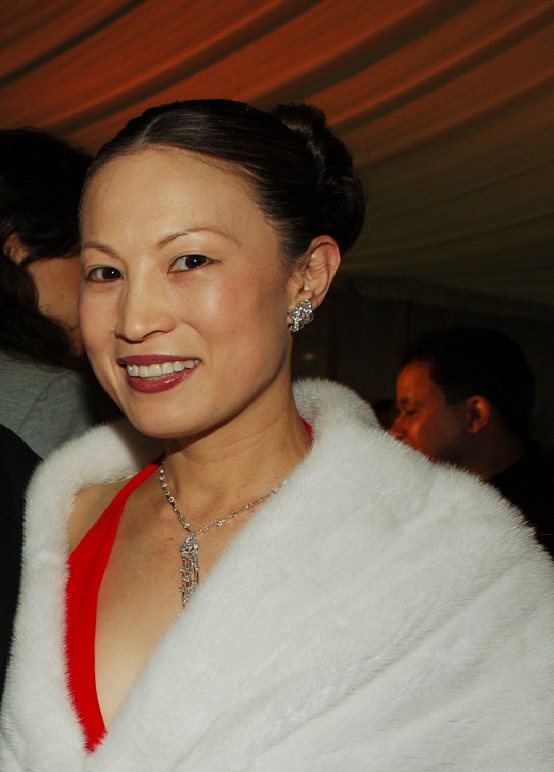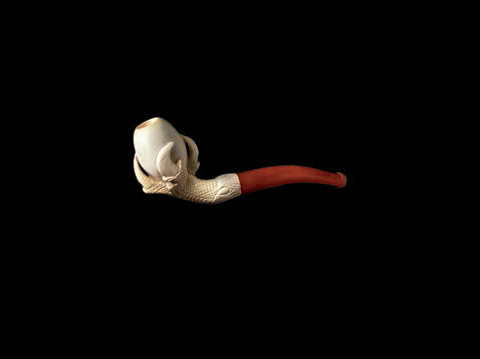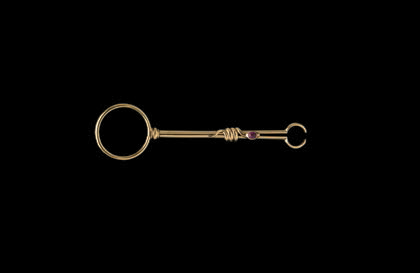Art World
artnet Asks: Designer and Collector Carolyn Hsu-Balcer
There's a new book about her antique cigarette holder collection.

There's a new book about her antique cigarette holder collection.

Artnet News

Designer and collector Carolyn Hsu-Balcer’s impressive and informative cigarette holder collection will get the recognition that it deserves when her book A Token of Elegance: Cigarette Holders in Vogue hits bookshelves on November 5. The book offers an intimate look at her collection of 125 cigarette holders and essays that take the reader through a historical journey that starts with the ritual uses of smoking in pre-Colombian cultures and takes you up to the current e-cigarette craze. Hsu-Balcer’s collection includes everything from the first cigarette holder made by Fabergé in 1875 to the disposable holders given as promotional gifts during the Roaring Twenties. In preparation for Hsu-Balcer’s book, artnet asked her a few questions about her collection and her aspirations for her forthcoming book.
How would you describe your experience?
My experience has been a fruitful learning curve—starting with the simple desire to own a beautiful functional object that originated from one of the major 20th century design schools to an interest in the social history of the object. My interest in cigarette holders also led me to a study of the global impact, for better or worse, of the tobacco trade—and even to a friendship with the artist Xu Bing through his Tobacco Project installations.

Cigarette or Cheroot Holder. France, c. 1900-40 Meerscham , amber mouthpiece.
Image: Photo by John Bigelow Taylor and Dianne Dubler.
What motivated you to start collecting cigarette holders? Were you inspired by a particular piece or have you always had a love for them?
It started with my love of beautiful functional objects and a deep interest in the major 2oth century design schools—Art Nouveau, Arts and Crafts Movement, Vienna Secession, Bauhaus, and Art Deco. As I mention in the book’s foreword, this love of functional design brought me to a flea market on New York’s West Side where a 1890 Viennese telescopic cigarette holder in an enamel case caught my eye. I was an occasional smoker at the time, and the holder seemed like a perfect complement to my lighter. While I became less interested in smoking, I grew more interested in cigarette holders.
My father’s family is in the tobacco business and, as befitted the decade when I was growing up, our home was filled with beautiful smoking accoutrements—ashtrays, lighters, innovative cigarette and match containers. My parents entertained at home often, and cigarette holders came to represent a time of elegance, etiquette, and glamour.

Erik Kollin for Fabergé, St. Petersburg, 1875. 14 Karat Gold, snake topped with Ruby.
Image: Photo by John Bigelow Taylor and Dianne Dubler.
Why did you decide to publish a book about your collection?
When I started to catalogue my collection some years ago and needed information on holders, I found that there were no readily available resources on the subject except for books on gold and silver markings. There were numerous books on cigarette cases and lighters, even match safes, but the only information on cigarette holders was to be found in references to ladies vintage accessories.
Then, as I considered giving the collection to a museum, I realized a book would be essential in helping a curator understand how to utilize the collection in a dynamic way and in relation to other design and art objects.

Cheroot Holder. Southeast Europe, c. 1900-1920 Meerschaum, 18-Karat gold girdle, amber mouthpiece.
Image: Photo by John Bigelow Taylor and Dianne Dubler.
While building your collection what were some of the qualities that you were looking for? What style or time period have you gravitated to the most?
I have always looked for cigarette holders made of different materials, from different periods and in different categories—plain, stylish, exotic, even erotic—and ones that reflected the social use of the day, for example, the disposable holders that cigarette girls would hand out in supper clubs or the cigarette holder giveaways that companies would use as a form of advertisement.
When searching for holders, it was very important that they be in pristine condition, with no sign of frequent use—the only exception being the Fabergé holder owned by Princess Margaret, which has her royal teethmarks on the mouthpiece!
Out of the 125 cigarette holders that are included in the book, which one stands out the most as your favorite piece or as an important piece for the history of cigarette holders?
Each holder is important as it reflects its owner and the times in which he or she lived. Given that, the highlight of the collection would have to be the earliest cigarette holder—a gold and ruby masterwork made in 1875 by Erik Kollin for Fabergé in St. Petersburg and designed to be worn like a ring on a woman’s white-gloved hand.
Cigarette holders have a rich history and are beautiful reflections of design trends throughout time. Do you believe that the trendy e-cigarettes will leave a similar lasting quality? If so, what do you think that will be?
The global love affair with tobacco started in 1492 when it was discovered in the new world by explorers from the old world. Tobacco was (and in many parts of the world still is) a social lubricant that transcended all borders, race, and class.
Cigarette holders were just one of the accessories used to enjoy tobacco. Putting aside for a moment the controversies surrounding its use, if the e-cigarette persists, its design will continue to evolve, perhaps to include a more ornate and elegant holder or case, much as has happened to the cell phone. Human beings seem to have an insatiable compulsion to make beautiful any object they use on a regular basis, to constantly improve it, often for purely aesthetic purposes.

Image: Photo by John Bigelow Taylor and Dianne Dubler.
What is the most important piece of information you want your reader to gain from this book?
The development of the cigarette-rolling machine and the invention of phosphorus matches led to the widespread consumption of cigarettes—and to the need for cigarette holders. In turn, designers and artists were challenged to make this object as pleasing to the eye as possible while keeping it functional.
It is this link between science, technology and art that I find fascinating and which is perfectly illustrated by the objects in this book. Art in whatever form does not exist in a vacuum. It develops and blossoms in reaction to practical and social needs and to technological innovations. If anything, an insight into that interconnection would be the most important thing the reader might gain from the book.